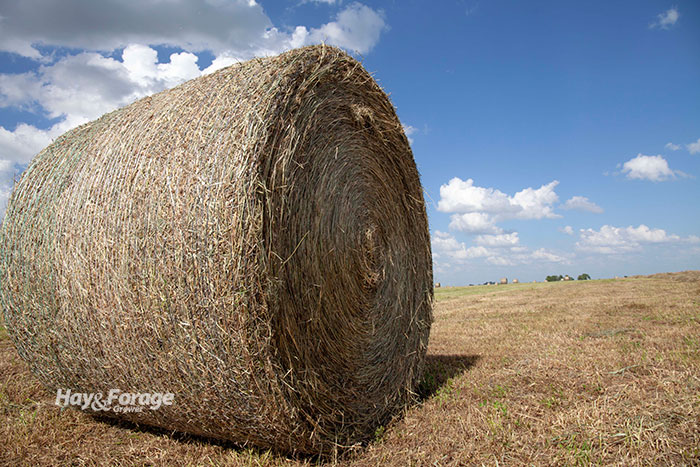
Although it takes a little time and investment, ammoniating low-quality hay, cornstalks, or straw can help improve its protein content and digestibility. University of Missouri Extension specialists are touting the practice as a strategy to stretch hay inventories.
Rusty Lee, an extension agronomist, says that ammoniation takes one week to a month, depending on the air temperature. In the summer, the practice can be accomplished in one to two weeks while that timeframe may extend for up to a month during the winter.
Evaluating the economics of the practice, Lee notes that the current anhydrous ammonia price is about $960 per ton. This translates to $28.80 for his recommended 60 pounds per ton of hay rate, or $14.40 of anhydrous per 1,000-pound bale.
“By spending $14.40, plus some labor, we can improve the feed value of a $60 straw bale,” Lee says. “It does not become the equivalent of good grass hay, but with good hay eclipsing $100 per bale, the $14.40 spent should result in a positive return on investment.”
The agronomist emphasizes to only ammoniate poor-quality forages. High-quality forages can become toxic after an ammonia treatment and cause what is known as “crazy cow syndrome” when fed.
“Ammoniation can double the crude protein of low-quality forages and increase the total digestible nutrients by up to 20%,” says Eric Bailey, a beef nutritionist with the University of Missouri. “Energy will be limiting in diets built around ammoniated low-quality forages, especially for cows nursing calves. Ammoniated forage will meet the nutrient requirements of pregnant, nonlactating females, but any winter-calving cows with a calf or cows in the last trimester of gestation before calving will need an additional energy supplement,” he adds.
Another advantage of ammoniating poor-quality, Kentucky-31 tall fescue hay is that it can significantly reduce the toxicity of the forage. Missouri studies have shown that ammoniated tall fescue is about five times less toxic than nontreated hay.
Lee recommends the following procedure when ammoniating forage bales:
1. Stack round bales seven at a time — four bales side by side and three on top.
2. Cover with heavy mil plastic.
3. Secure the edges of the plastic by covering with soil or waste lime. Tamp soil down to seal securely.
4. Wear proper safety equipment when working around ammonia.
5. Prefill the ammonia tank with the correct amount to avoid risk of overtreating. Use 60 pounds of anhydrous ammonia per ton of hay.
6. Slowly add ammonia by cracking the valve on the anhydrous ammonia tank. Allow ammonia to trickle into the middle of the hay bales overnight.
7. Air out bales three days before feeding to allow the ammonia to clear. Do not uncover in windy conditions.
8. Once the bales have been aired out, sample and test the forage to assess forage quality improvement.

